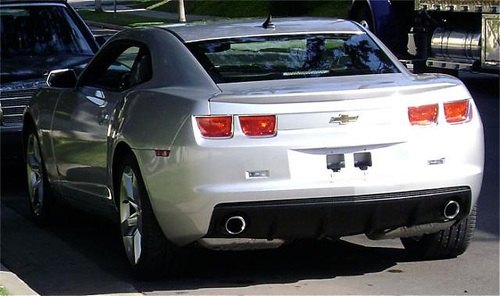Ask the Best and Brightest: New GM, Same Old Quality Issues?
TTAC doesn’t normally report recalls, no matter how major. As our Best and Brightest has pointed out, it’s not fair to blog one manufacturer’s product recalls without blogging them all. Of course, there are exceptions that prove (test) the rule. This is one of them. Autoblog reports: “Sporadic reports have begun popping up in the Camaro5 forums about issues with V8-powered SS models equipped with the manual transmission. It seems that doing a hard launch or using the launch control system occasionally results in a broken output shaft, a serious failure that will most likely leave the car immobile and in need of repair . . . a factory hold has been put on deliveries of manual transmission V8 Camaros while Chevrolet engineering teams investigate the problem.” I have to ask: where’s the evidence that New GM is/will be any better at building cars than old GM? As reinstated Car Czar Maximum Bob is all about “perception gaps” and marketing, what chance does this company have against its competition?
More by Robert Farago


































Comments
Join the conversation
When a thrown rod results in an engine fire, I don't think it's "dramatic" to refer to the ultimate outcome as a "nightmare." Having your car catch on fire is pretty scary for most people...and one of those 1980s problems with domestic cars that sent people running to the Japanese.
Ronnie - let's just say that I've had an up close and personal experience with a Fiero...thankfully not mine! Hearing an engine go bang behind your head is a rather scary experience. I'll add this to my previous post since I was heading down the route of how GM knew about the engine and cooling problems early on, including watching Fieros burn on a track, and they did nothing but place a sticker on the fuel filler lid telling people to check their oil with every fuel stop. I think there was an issue where the cooling system wasn't installed correctly (or tested) and it would blow hot air into the engine bay instead of blasting it away from the car. I remember reading this part in the "Comeback" book where they denied, denied and denied over and over again, and then when the bad press became too much, they issued a recall after business hours on Thanksgiving eve and prayed that everything would be quiet due to the holiday. Instead it was a PR disaster and destroyed whatever the Fiero was supposed to become. Then again, given the number of 2009 models that already have dead lights and electrical system problems, I get the impression that in order to keep costs down, supplier parts have been penny-pinched until the penny bleeds and the automakers are accepting "not good enough" parts w/o extra testing in the hope that the money saved by cheaper parts offsets any warranty repairs caused by faulty electronics.